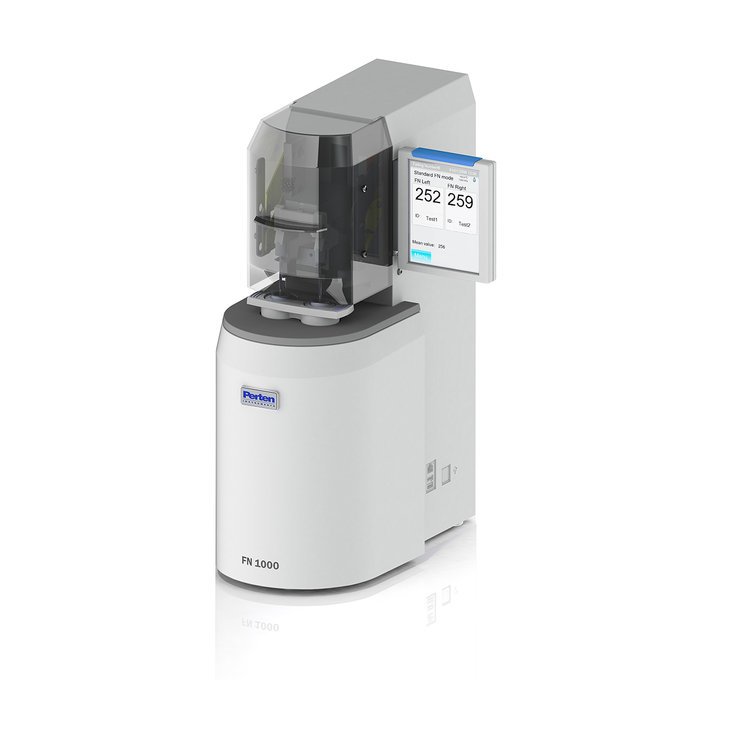The impact on rainfall and falling number tests.
The increase in rainfall this year has seen changes in falling number testing across the country. Rainfall causes the grains to start sprouting prematurely before they have been harvested, causing the starch to start turning into sugars, which affects the usefulness of the flour.
Germination causes an increase in Alpha Amylase activity. You can test whether this has happened to the grains by measuring the alpha amylase levels in the flour / ground wheat using the falling number test.
The longer the grain sprouts the greater the level of alpha amylase form. If badly sprouted grain is milled, it can cause the end product to form different characteristics such as very doughy bread.
Hagberg Falling Number
By using the Hagberg Falling Number Method, you can accurately detect the level of alpha amylase.
The right amount of alpha amylase activity enables bakers to achieve high volumes of bread with an ideal combination of firm and soft textures.
When Alpha Amylase is too low, the breadcrumb will be drier. When Alpha Amylase is too high, the resulting dough will be stickier. In both cases, you get less volume from your bake.
Falling Number manages risk in baking, helping you get a consistency of quality from your bake, and producing bakes with specific desired qualities. You can use Perten FN 1000 to set specific Falling Number targets and register sample IDs.
The instrument can provide mean moisture calculations, moisture, and altitude-corrected results, and calculate blends and malt addition.
It provides a uniform, globally recognised standard of testing for grain farmers, intake and processors.
In conclusion, due to an increase rainfall during the harvest period, many customers have found the need to increase the level of Falling Number tests compared to a drier harvest period.


